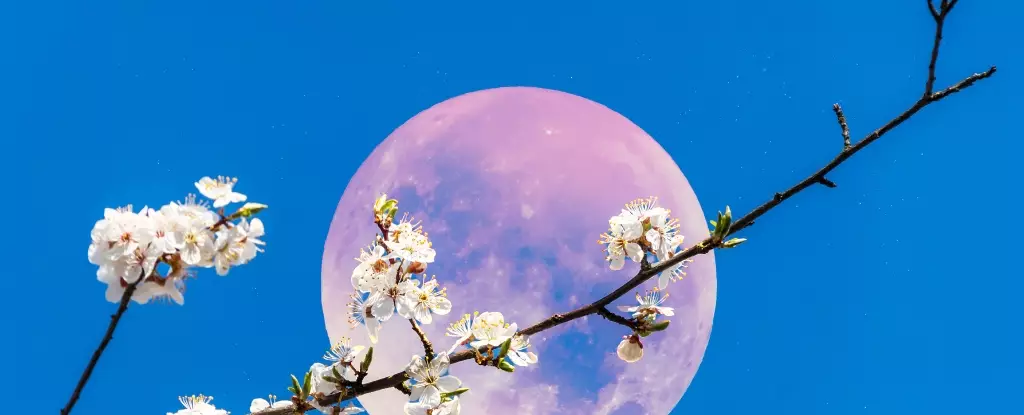When you gaze up at the night sky, the Moon often captivates with its radiant glow. However, a closer observation reveals a more intricate narrative, one that goes beyond the familiar face of our celestial companion. Not every Full Moon holds the same significance—some are defined by their journey, others by their timing, and many by the wonder they inspire in human hearts. As we follow the delicate waltz of our Moon, one can’t help but be enchanted by the fascinating phenomena that come into play, such as precession, orbital inclination, and cultural significance.
Hailing from the dual perspectives of astrophysics and mysticism, the Moon’s orbit has a unique tilt of 5.15 degrees relative to the ecliptic plane—the path Earth takes as it spins around the Sun. This inclination creates an engaging drama as the Moon shifts in its declination, wandering from as far north as 28.65 degrees to 28.65 degrees south. This celestial ballet impacts not only how we perceive our lunar companion, but also shapes the rhythms of our natural world.
The Cycle of Standstills and Eclipses
A pivotal aspect of lunar observation is the cyclical nature of what astronomers term the Major and Minor Lunar Standstills. Every 18.6 years, the Moon’s path across the heavens changes markedly. The last Major Lunar Standstill occurred in 2006, creating a period where the Moon’s trajectory seemed to soar high in the sky. As we near another Major Standstill in 2025, one must reflect on how these cycles influence lunar phenomena such as eclipses, which astonishingly do not occur every month due to the Moon’s orbital tilt.
This phenomenon reminds us of nature’s ebb and flow, showcasing a relationship where the pull of the Sun gently drags the Moon’s orbit around the Earth, causing a precession that may go unnoticed by most observers—yet significantly enriches our understanding of our place in the cosmic hierarchy. What a beautiful example of interconnectedness!
Ancient Wisdom and Modern Mythos
Historically, the Moon has played a vital role in guiding humanity, both literally and allegorically. Ancient societies revered full moons for marking the seasons and guiding agricultural practices. Stone structures like the Callanish Stones in Scotland were erected to align with the Moon’s passage, showcasing how deeply intertwined lunar cycles were with the rhythms of life itself. In examining the Moon today, we can only hope to reclaim some of that ancient reverence and understanding.
As the June Full Moon approaches, also known as the Strawberry Moon, the stage is set for a spectacular view in the Southern Hemisphere. While watchers in places like Alaska may face the peculiar case of the Moon not rising at all, their counterparts in the southern climes will revel in the high altitude of this illuminating orb. This stark contrast serves as a fascinating reminder of the diverse experiences our planet provides, all tethered by the very same Moon.
An Occultation of Stars
As June unfolds, the Moon wades into a stellar play, occulting bright stars such as Spica and Antares. These events not only provide astronomers and enthusiasts with tempting opportunities for observation but also sprinkle a sense of wonder across the skies. For those in Tasmania and New Zealand, the geometry of celestial bodies will paint a temporary tableau that speaks to the Universe’s grandeur.
July promises to introduce even more excitement, as the Moon will extend its occultation path to include Regulus. Such rare celestial events enhance our appreciation for the Moon’s beauty and complexities, turning every observation into an act of cosmic exploration.
The Moon as a Personal Observatory
Regardless of where one stands—be it in a backyard, atop a hill, or even from a bustling city street—each vantage point transforms into a unique observatory. This personal touch by ordinary individuals juxtaposes the scientific realm, offering contrasting narratives that enrich the human experience of our Moon. For photographers and stargazers, each full moon provides an invitation to reflect on both the present moment and the cosmic stories they are part of, despite the occasional frustration that bright lunar light may cause for deep-sky imaging.
In essence, our Moon serves not only as a celestial body but as a profound teacher. Its qualities shape our appreciation for the universe, offering lessons in celestial mechanics, astronomical cycles, and our very existence. In every phase and every journey, the Moon challenges us to wonder not only about the cosmos but also our interconnectedness with the stars.

